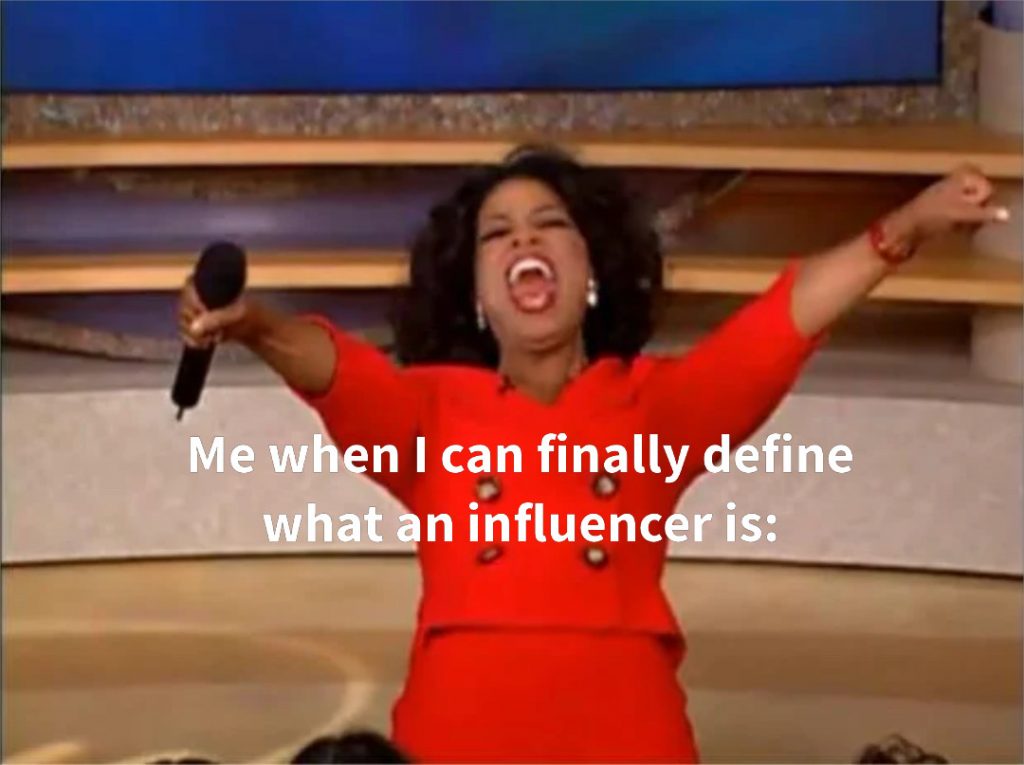Reading Time: 8 minutes

Introduction
In the last decade, the digital landscape has undergone a transformative evolution. Social media, once a burgeoning realm of casual interactions, has mushroomed into a colossal ecosystem, reshaping how we connect, share, and influence. From picture-perfect posts on Instagram to insightful vlogs on YouTube, the proliferation of these platforms has been exponential, casting a wide net over global audiences. Central to this evolution is the rise of digital influencers—individuals who have harnessed the power of online platforms to inspire, inform, and captivate masses.
But why should we care about the sheer number of influencers in the social media stratosphere? At first glance, it might seem like a mere number game, a digital popularity contest. However, a closer look reveals that the stakes are considerably higher.
From a marketing perspective, influencers have become the modern-day equivalent of brand ambassadors, their recommendations holding the power to sway purchasing decisions and create viral trends. In economic terms, the influencer industry is no longer a sideline; it’s a multi-billion dollar segment, shaping business strategies and creating new avenues for revenue. And culturally, influencers are more than just digital celebrities; they’re pivotal in shaping societal norms, perspectives, and digital culture at large.
As we delve deeper into understanding this vast digital tapestry, it becomes clear: the world of influencers is not just about glamorous photos or viral dances; it’s about the intricate interplay of commerce, culture, and community.
What Constitutes an ‘Influencer’?
The term “influencer” has seamlessly integrated itself into our daily lexicon, but what truly constitutes an influencer? While many might instinctively associate the title with staggering follower counts or viral fame, the definition extends far beyond mere numbers.
At its core, an influencer is an individual who wields the power to affect decision-making processes of their audience, primarily due to their authority, knowledge, position, or relationship with their followers. This influence isn’t solely tethered to a user’s follower count; it’s deeply rooted in trust, engagement, and the ability to inspire or provoke thought.
This brings us to the intricate landscape of influencer categorization. While the boundaries aren’t always clear-cut, understanding the distinctions can offer insights into the dynamic realm of digital influence:
- Micro-influencers: Typically ranging from 10,000 to 100,000 followers, these influencers might seem diminutive in the grand scale of social media. However, they often boast a dedicated and engaged audience, making them invaluable for niche markets and authentic community-building.
- Macro-influencers: With follower counts ranging between 100,000 to a million, macro-influencers are often seen balancing the tightrope between organic community interactions and brand collaborations. They have a wider reach than micro-influencers but still maintain a semblance of personal connection.
- Mega influencers: These are the powerhouses of the influencer world, boasting over a million followers. They are often celebrities or individuals who have achieved a high level of fame online. Their vast reach makes them ideal for large-scale marketing campaigns, but their engagement rates might not always be as intimate.
Venturing further into the granularities, we encounter nano-influencers, individuals with fewer than 1,000 followers. They might seem like a mere blip on the digital radar, but their influence is often profound in tightly-knit communities or hyper-local settings. And then there’s the everyday user—those without the “influencer” title but whose recommendations, reviews, and content can ripple through their personal networks, creating organic waves of influence.

Major Social Media Platforms’ Influencer Dynamics and Statistics
In the intricate tapestry of the digital world, each social media platform has carved its niche, bringing with it a unique flavor of influencers and their dynamics. Let’s journey through these platforms and unravel the influence they command:
- Instagram: Often termed as the reigning monarch of the influencer kingdom, Instagram is where visuals take center stage. From fashionistas showcasing their latest outfits to travel enthusiasts sharing breathtaking vistas, Instagram offers a canvas for the aesthetically-driven. Its Stories, IGTV, and Reels features further diversify content, ensuring that influencers have multiple avenues to connect with their audience. The platform’s emphasis on aesthetics, lifestyle, and personal branding has made it a hotspot for influencers across various niches.
- There are approximately 64 million Instagram influencer accounts across the globe (TrendHero, 2023).
- Out of all the influencers worldwide on Instagram, 91.07% categorize themselves as nano influencers, while 8.04% fall under the micro category. Macro influencers make up 0.83%, and a mere 0.05% are recognized as celebrities (TrendHero, 2023).
- YouTube: If Instagram is the kingdom, YouTube might very well be the empire. Here, content creators aren’t just influencers; they’re full-blown digital celebrities. With videos ranging from in-depth tutorials to heartfelt vlogs, the platform has birthed a new age of stardom, where creators can cultivate vast audiences and enjoy a celebrity status often mirroring that of movie or pop stars.
- There are approximately 5 million influencers worldwide on Youtube (The Small Business Blog, 2023).
- The predominant category for YouTube influencers in 2022 was “People and blogs,” contributing 20.6 percent of videos. Subsequently, entertainment garnered a 16.8 percent share, with music close behind at 13.7 percent.
- TikTok: The meteoric rise of TikTok has reshaped the very fabric of content consumption. Embracing brevity and creativity, this platform turned short-form content into an art, giving birth to a new wave of influencers. Their reach isn’t just limited to the app; TikTok trends routinely spill over into other platforms, marking its undeniable influence.
- According to Shopify, there are over 100,000 influencers on TikTok globally.
- There is an estimated 1800+ nano influencers and 25,000 micro-influencers (Shopify, 2023).
- X (Twitter): A realm of words, X is where thoughts become trends. Influencers here command attention not just through follower count, but through the virality of their posts, sparking conversations, debates, and even global movements. From breaking news to the latest memes, X influencers have the power to shape narratives in just 280 characters.
- X reported a global user base of roughly 368 million by December 2022. (Statista, 2023).
- 49% of X users rely on recommendations from the platform’s influencers (X Business, 2023).
- Facebook & Snapchat: As two of the earliest giants in the social media space, their evolution is intertwined with the very growth of digital influence. While Facebook pivoted towards community-building with groups and pages, Snapchat emphasized ephemeral content. Influencers on these platforms have adapted, leveraging these unique features to engage their audiences.
- In June 2023, the U.S. recorded 42,000 influencers across Facebook, each having between 10,000 and 50,000 followers (Statista, 2023).
- There are approximately 585.7 million users on Snapchat, as of August 2023 (Statista, 2023).
As we traverse the varied terrains of these platforms, it’s evident that the influencer ecosystem is as diverse as it is vast, with each platform offering a unique canvas for creators to weave their narratives.
The Economic Impact of the Influencer Ecosystem
As we explore the influencer landscape, it’s evident that they’re not only transforming digital interactions but also impacting the global economy. What began as a modest trend of personal endorsements on nascent social platforms has now matured into a behemoth industry with complex economic structures.
The Industry’s Worth: From Individual Endorsements to Major Campaigns
In the early days of social media, influencers were simply avid users, sharing recommendations with a slightly larger circle of friends. Now, they’re integral components of marketing strategies, steering comprehensive campaigns, and shaping consumer perceptions. Global brands no longer merely incorporate influencers as an afterthought; they strategically align with them, often investing vast resources. From micro-influencers driving niche engagement to celebrities helming expansive campaigns, the financial trajectory of the influencer industry is nothing short of impressive.
The Ripple Effect: Jobs and Industries Created or Elevated by Influencers
But to understand the true economic magnitude of the influencer ecosystem, one must look beyond direct collaborations. The rise of influencers has spawned an entire sub-industry dedicated to optimizing this dynamic. Influencer management agencies, once a niche concept, are now cornerstone entities, bridging the gap between brands and influencers, ensuring both parties maximize their collaboration’s value. Additionally, the growth of influencer marketing platforms—equipped with analytics, matchmaking tools, and ROI metrics—serves as a testament to the industry’s evolving sophistication.
Beyond these direct offshoots, consider the cascading job opportunities influencers have generated: the content creators, photographers, videographers, and digital strategists who are in perennial demand to ensure the influencer’s brand remains polished and engaging. Plus, there’s a thriving educational segment—workshops, online courses, webinars—all aiming to decode the ever-evolving influencer playbook.

The Future of Digital Influence
As the digital age surges ahead, the realm of influencers is not just expanding; it’s evolving. With technology’s relentless advancement and a dynamic global audience’s ever-changing demands, we find ourselves on the cusp of a new era of digital influence. But what does the horizon hold for influencers and the brands that collaborate with them? Let’s delve into the possibilities.
Predictions for the Next Wave of Influencers
The influencer blueprint is constantly being redrawn. While today’s influencers might be characterized by their niche expertise, impeccable content aesthetics, or massive follower counts, tomorrow’s might be defined by their adaptability, cross-platform presence, or immersive experiences they offer. We might see a surge of ‘phygital’ influencers, who seamlessly merge the physical and digital realms, or even AI-generated personas that tap into the zeitgeist with precision.
The Impact of Technology: AR, VR, and New Platforms on the Horizon
The lines between reality and the digital domain are blurring. Augmented and virtual reality technologies are not only enhancing the user experience but are also redefining how influencers connect with their audience. Imagine a world where followers can virtually “hang out” with their favorite influencer, attend their events in a 3D space, or even explore their recommended products in a simulated environment before making a purchase. The possibilities are boundless.
Moreover, as we’ve seen in the past, the birth of a single new platform can shake the entire influencer ecosystem. While platforms like TikTok have recently risen to prominence, what lies ahead might be even more transformative, offering novel ways for influencers to engage, entertain, and educate.
Evolving Challenges: Market Saturation, Authenticity, and Changing Algorithms
With opportunity also comes challenges. The influencer space is becoming increasingly saturated, making it imperative for new entrants to carve a unique identity. The quest for authenticity amidst sponsored posts and brand collaborations is another hurdle, as audiences become more discerning and crave genuine connections.
Furthermore, the ever-changing algorithms of social platforms keep influencers on their toes. What guarantees visibility today might be obsolete tomorrow, pushing influencers to perpetually innovate and adapt.
And finally…
As our exploration of the influencer landscape comes to a close, we are left with a heightened understanding of their undeniable influence on today’s digital realm. Their reach extends far beyond simple product recommendations or entertaining content. Influencers, in many ways, are the modern-day architects of culture, guiding consumer habits, trends, and broader societal narratives.
Yet, with this expansive influence comes a weighty responsibility. The power to shape perspectives, affect purchasing decisions, and even mold cultural norms is not to be taken lightly. Both the positive and negative impacts of influencer culture can ripple through societies, impacting individuals’ self-perceptions, worldviews, and behaviors.
Thus, at this digital juncture, a call is made to both brands and consumers. It is a call to prioritize authentic engagements over mere numbers, to champion influencers who wield their power responsibly, and to always seek a genuine, positive impact in our interconnected digital world. The future of digital influence is not just about quantity; it’s about the quality and the lasting legacy it leaves behind.
Citations
- Andrii. (2023, June 27). How Many Influencers are There in 2023 – trendHERO. trendHERO. https://trendhero.io/blog/how-many-influencers-are-there/#:~:text=There%20are%20more%20than%2064,and%20trends%20cannot%20be%20overstated
- Statista. (2023, June 28). Global distribution of YouTube influencers 2022, by category. https://www.statista.com/statistics/1251350/distribution-youtube-influencers-category-worldwide/
- Campbell, S. (2023, July 3). How Many Influencers Are There In The World In 2023? (Statistics). The Small Business Blog. Retrieved October 10, 2023, from https://thesmallbusinessblog.net/how-many-influencers-are-there-in-the-world/
- 15 Essential TikTok Statistics for Marketers in 2023. (2023, September 13). Shopify. https://www.shopify.com/blog/tiktok-statistics#:~:text=It%20is%20estimated%20that%20there,10%2C000%E2%80%9350%2C000%20followers%3A%2025%2C293
- Statista. (2023b, August 14). Snapchat users worldwide 2018-2027. https://www.statista.com/forecasts/1142919/snapchat-users-in-the-world
- Statista. (2023b, September 13). X/Twitter: number of worldwide users 2019-2024. https://www.statista.com/statistics/303681/twitter-users-worldwide/

